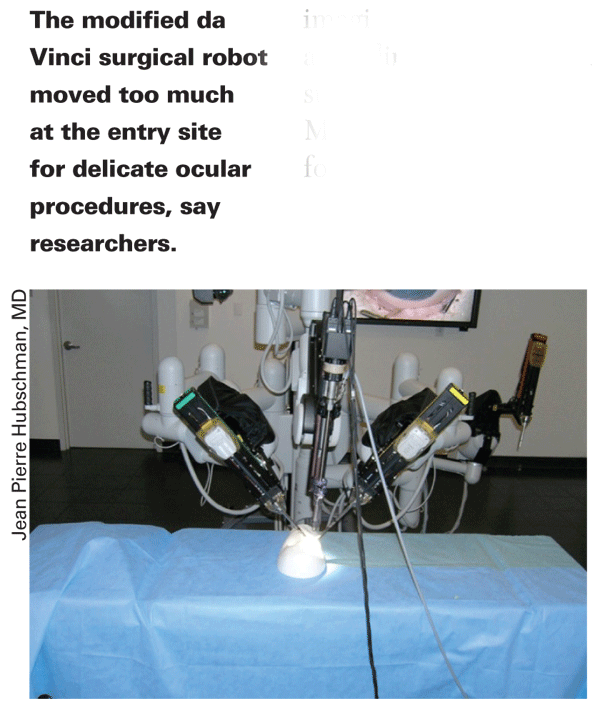The use of robotics has grown exponentially in such fields as cardiac, urologic and oncologic surgery, going from around 1,500 procedures performed in 2000 to 20,000 in 2004, according to one study.1 Researchers are now looking to see if robotics might have any usefulness in intraocular surgery, as well. It's a harder sell in ophthalmology, however, since eye surgeons already enjoy the ad-vantages that robots offer, namely good access to the surgical site, a stereoscopic view and good maneuverability.
Researchers continue to work with them, though. Here's what they're working on.
Researchers at the
The first step toward an ocular surgical robot was to try to modify the existing standard for robotic surgery, the da Vinci Surgical System by Intuitive Surgical (

The UCLA team has now created a smaller robot designed for ocular surgery. The unit is about the size of a person's head, and has two arms outfitted with multiple instruments.
Now in its initial stages, it's been used for phaco and vitrectomy on pig eyes, with instruments controlled by the surgeon using a joystick. "You just position the robot and it can place the trocar for a vitrectomy and put the instrumentation through it," says Dr. Hubschman. "It can also do a corneal incision and place instruments through it."
However, experts agree that robots will have to offer more than just good visualization and access to the tissue to work in ophthalmology. "To be really useful in eye surgery, a robot has to give rise to new surgical indications, such as delicate tasks like vascular cannulation," says Dr. Hubschman. Robotic surgery is also more expensive, with a higher price for disposable instruments and longer operating times.2
Despite these obstacles, research continues. "The first step is to continue to test the new robot on pig eyes," says Dr. Hubschman. "Then, we'll integrate some sensors to get real-time feedback to automate part of the surgery …. Even though the robot has poor judgment and decision-making ability, if it has all of the anatomic information in real time, it can perform some tasks on its own."
1. Kumar R, Hemal AK. Emerging role of robotics in urology. J Min Access Surg 2005;1:202–210.
2. Bodner J, Augustin F, Wykypiel H, et al. The da Vinci
robotic system for general surgical applications. Swiss Med Wkly 2005;135:674–678.



